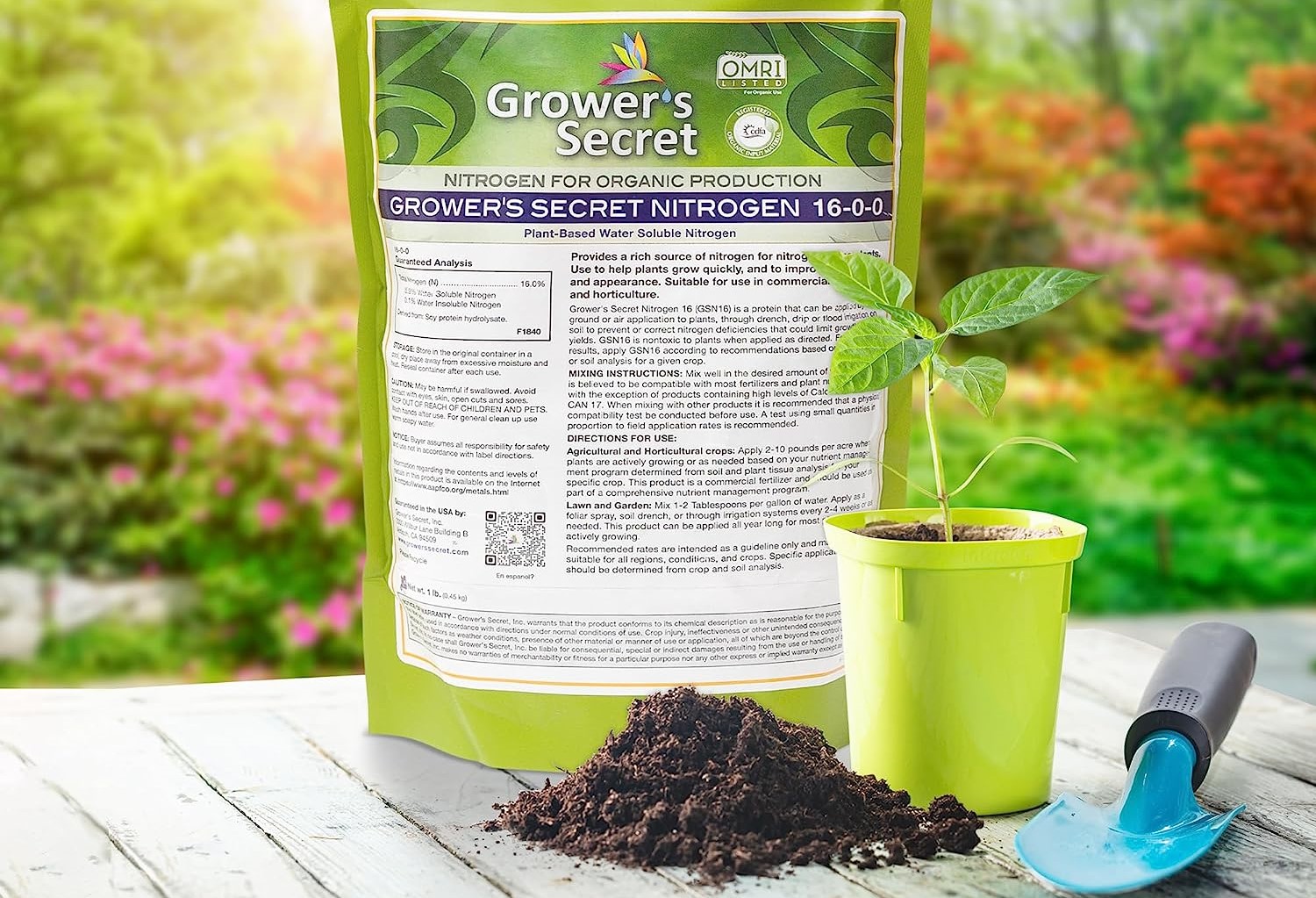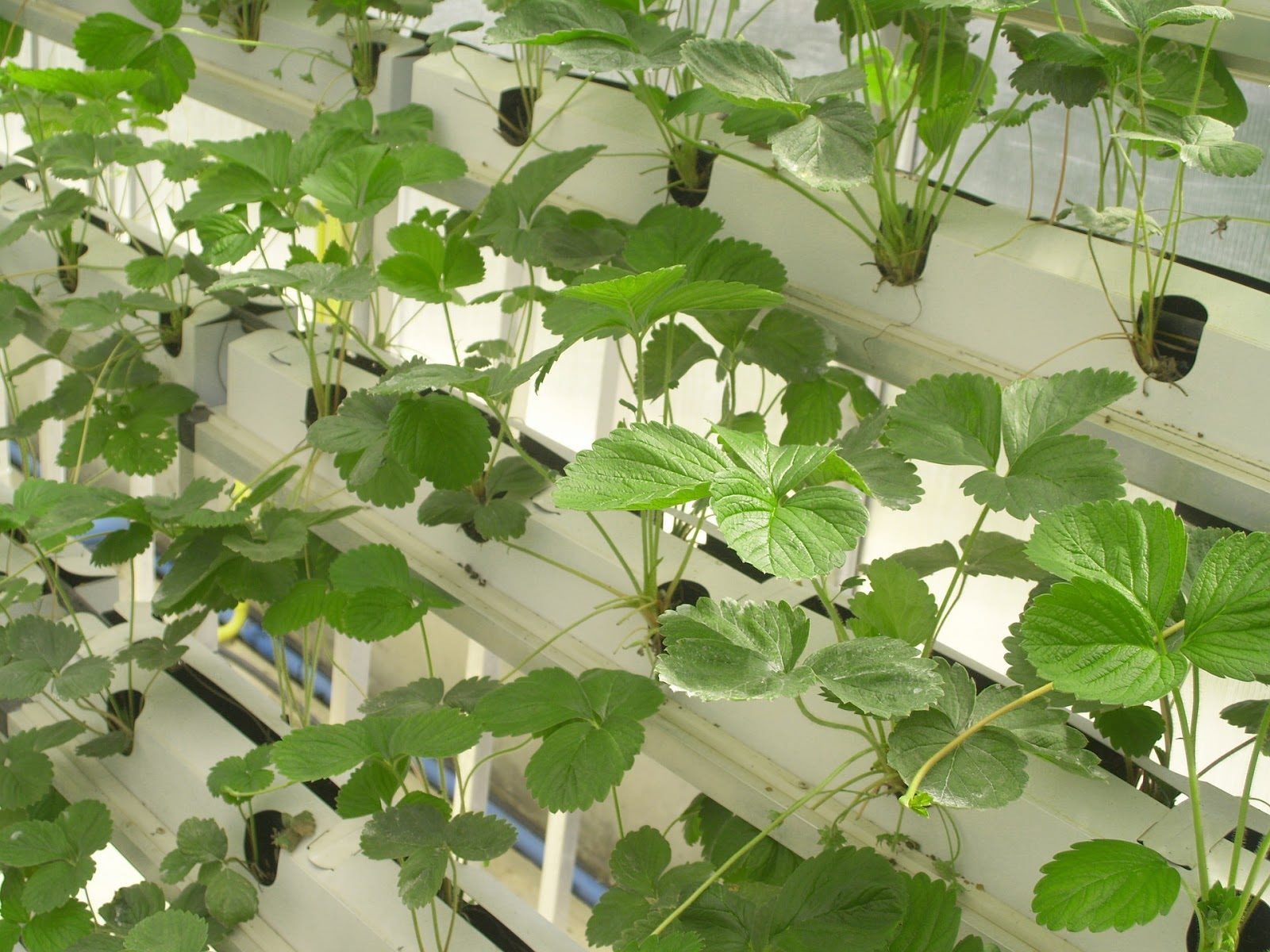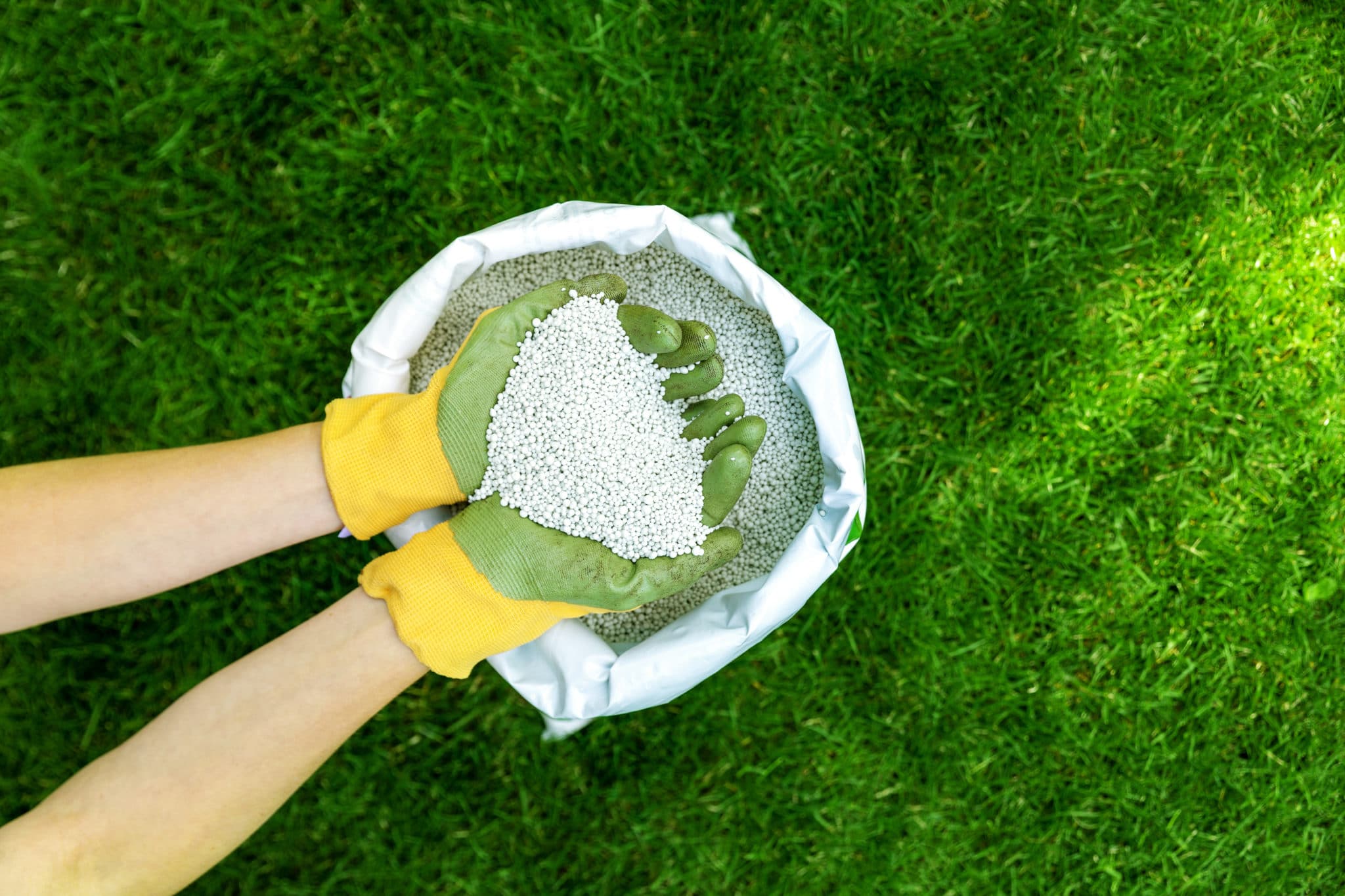Home>Gardening News and Trends>What Is A Low Nitrogen Fertilizer


Gardening News and Trends
What Is A Low Nitrogen Fertilizer
Modified: January 22, 2024
Discover the benefits of using a low nitrogen fertilizer in your garden. Stay updated with the latest news on sustainable gardening practices.
(Many of the links in this article redirect to a specific reviewed product. Your purchase of these products through affiliate links helps to generate commission for Chicagolandgardening.com, at no extra cost. Learn more)
Table of Contents
Introduction
Welcome to the world of gardening and agriculture, where the use of fertilizers plays a crucial role in ensuring healthy plant growth and abundant harvests. Among the various types of fertilizers, nitrogen fertilizer is widely recognized for its ability to promote vigorous plant development and improve crop yields. However, the excessive use of nitrogen fertilizer can have detrimental effects on the environment and even affect the quality of crops.
As a response to these concerns, low nitrogen fertilizers have emerged as a sustainable alternative that can help strike a balance between plant nutrition and environmental preservation. In this article, we will delve into the world of low nitrogen fertilizers, exploring what they are, the benefits they offer, and the different types available. We will also discuss proper application techniques and factors to consider when using low nitrogen fertilizers in your garden or farm.
Whether you are an experienced gardener or just starting your journey in agriculture, understanding the concept and benefits of low nitrogen fertilizer is essential for sustainable and responsible plant cultivation. So, let’s dive in and explore the fascinating world of low nitrogen fertilizers!
What is Nitrogen Fertilizer?
Nitrogen is a vital element necessary for plant growth and development. It plays a crucial role in various biological processes, including photosynthesis, protein synthesis, and nutrient transport within plants. However, in natural soil conditions, the availability of nitrogen might be insufficient to meet the demands of growing plants. That’s where nitrogen fertilizers come into play.
Nitrogen fertilizers are products specifically formulated to provide plants with an additional source of nitrogen. These fertilizers typically contain compounds such as ammonium nitrate, urea, or ammonium sulfate, which release nitrogen into the soil upon application. This supplemental nitrogen helps boost plant growth, increase leaf production, and enhance overall plant vigor.
When nitrogen fertilizers are applied to the soil, the nitrogen compounds undergo various chemical reactions, leading to the conversion of nitrogen into forms that plants can readily absorb. Once absorbed, nitrogen is incorporated into plant tissues and utilized to synthesize chlorophyll, enzymes, and other essential molecules necessary for plant growth.
It is important to note that different plants have varying nitrogen requirements at different growth stages. Leafy green vegetables and decorative plants, for instance, require relatively high nitrogen levels to support lush foliage. On the other hand, crops like legumes and grains have lower nitrogen requirements during vegetative growth but may require more nitrogen during flowering and fruiting stages.
Overall, nitrogen fertilizer serves as an important tool for farmers and gardeners to ensure optimal plant nutrition and achieve desired growth outcomes. However, excessive or improper use of nitrogen fertilizers can lead to various environmental issues and agronomic challenges. Therefore, it is crucial to consider alternative solutions that can effectively meet the nutrient needs of plants while minimizing the negative impact on the environment.
Effects of Excessive Nitrogen Fertilizer
While nitrogen fertilizer is essential for plant growth, excessive use can have detrimental effects on the environment, crop quality, and even human health. Understanding these effects is crucial for implementing sustainable agricultural practices and optimizing fertilizer use.
1. Environmental Pollution: One of the primary concerns associated with excessive nitrogen fertilizer use is environmental pollution. When nitrogen is applied in excess, it can leach into groundwater or runoff into nearby water bodies. This leads to an increase in nitrate levels, which can contaminate drinking water sources and contribute to algal blooms in aquatic ecosystems. These algal blooms deplete oxygen levels in the water, causing harm to fish and other aquatic organisms.
2. Air Pollution: Nitrogen fertilizers release nitrogen-containing compounds into the atmosphere, such as ammonia and nitrous oxide, which are potent greenhouse gases. Ammonia contributes to air pollution, particularly in confined animal feeding operations, where it can affect local air quality and the health of surrounding communities. Nitrous oxide, on the other hand, is a significant contributor to global warming and the depletion of the ozone layer.
3. Reduced Biodiversity: Excessive nitrogen fertilizer use can lead to changes in soil pH and nutrient availability, favoring the growth of certain plant species over others. This can result in a loss of biodiversity and disrupt delicate ecological balances. Native plant species may be replaced by more aggressive and invasive species, leading to a decline in habitat quality for wildlife.
4. Decreased Crop Quality: While nitrogen is crucial for plant growth, excessive amounts can negatively impact crop quality. High nitrogen levels can lead to an overabundance of foliage at the expense of flowers or fruit production. This can result in reduced yields and lower-quality crops with decreased nutritional value.
5. Economic Costs: The overreliance on nitrogen fertilizers can have economic implications for farmers. Excessive nitrogen use may result in increased input costs for fertilizers and energy, and reduced profitability due to lower crop yields and quality. Additionally, the environmental damage caused by excessive nitrogen fertilizer use can lead to regulatory measures and fines, further adding to the financial burden.
It is evident that the excessive use of nitrogen fertilizers can have far-reaching and adverse effects. Adopting sustainable agricultural practices, including the use of low nitrogen fertilizers, is crucial to mitigate these problems and ensure a healthier environment and more sustainable farming systems.
Benefits of Using Low Nitrogen Fertilizer
Low nitrogen fertilizers offer numerous benefits for both the environment and agricultural practices. By using these specialized fertilizers, farmers and gardeners can optimize plant growth while minimizing the negative impacts associated with excessive nitrogen use. Let’s explore some of the key benefits of using low nitrogen fertilizers:
1. Environmental Protection: Perhaps the most significant advantage of using low nitrogen fertilizers is their reduced environmental impact. These fertilizers provide plants with just the right amount of nitrogen they need without excessive runoff or leaching into water bodies. As a result, the risk of groundwater contamination and algal blooms is significantly reduced, preserving the health of aquatic ecosystems and drinking water sources.
2. Minimized Air Pollution: Low nitrogen fertilizers are formulated to release nitrogen compounds at a slower rate, leading to reduced emissions of ammonia and nitrous oxide into the atmosphere. This helps minimize air pollution and mitigate the contributions of these greenhouse gases to climate change and ozone depletion.
3. Efficient Nutrient Uptake: Low nitrogen fertilizers are designed to improve the efficiency of nutrient uptake by plants. By incorporating slow-release technologies and nutrient stabilizers, these fertilizers ensure that nitrogen is gradually available to plants over an extended period. This reduces the risk of nutrient loss and enhances plant utilization of nitrogen, leading to improved crop growth and yield.
4. Balanced Plant Growth: Excessive nitrogen can often result in imbalanced plant growth, with an overemphasis on foliage rather than flowers or fruit. Low nitrogen fertilizers provide plants with a balanced nutrient supply, promoting more proportional development and improved crop quality. This can lead to higher yields, enhanced nutritional value, and better marketability of agricultural produce.
5. Cost Savings: While low nitrogen fertilizers may have a slightly higher upfront cost compared to conventional fertilizers, their long-term benefits outweigh the investment. These fertilizers reduce the need for frequent applications and minimize nutrient losses, resulting in cost savings over time. Additionally, the reduced environmental impact can help avoid potential fines or penalties associated with excessive nitrogen use.
6. Sustainable Agriculture: By using low nitrogen fertilizers, farmers contribute to sustainable agricultural practices. They actively participate in reducing the environmental footprint of their operations, protecting natural resources, and promoting long-term soil health. This ensures the longevity of agricultural systems and fosters a more sustainable and resilient future for food production.
In summary, adopting low nitrogen fertilizers offers a range of benefits, from environmental protection and cost savings to improved crop quality and sustainable agriculture. By making this conscious choice, farmers and gardeners can strike a balance between meeting the nutritional needs of plants and preserving the health of our planet.
Types of Low Nitrogen Fertilizers
There are several types of low nitrogen fertilizers available that provide a controlled release of nitrogen to plants. These fertilizers are designed to gradually release nitrogen over an extended period, ensuring efficient nutrient uptake and minimizing the risk of environmental pollution. Let’s explore some common types of low nitrogen fertilizers:
1. Slow-Release Fertilizers: Slow-release fertilizers are specifically formulated to release nutrients, including nitrogen, at a slow and consistent rate over an extended period. These fertilizers are often coated or encapsulated, allowing for a controlled release of nitrogen in response to moisture, temperature, and soil microbial activity. Slow-release fertilizers provide a steady supply of nutrients to plants, reducing the risk of nutrient loss due to leaching or volatilization.
2. Controlled-Release Fertilizers: Controlled-release fertilizers consist of nutrient-rich granules coated with a semi-permeable resin or polymer. These coatings control the release of nitrogen, thereby providing plants with a sustained and consistent supply of nutrients. Controlled-release fertilizers are designed to release nutrients in response to factors such as temperature, soil moisture, and microbial activity. This ensures that plants receive the required nutrients over an extended period, promoting steady growth and reducing the risk of nutrient wastage.
3. Organic Fertilizers: Organic fertilizers are derived from natural sources such as plant matter, animal waste, and compost. These fertilizers provide a low but steady supply of nitrogen as they slowly decompose in the soil. Organic fertilizers improve soil health and structure, promote microbial activity, and contribute to long-term nutrient availability. While the nitrogen content in organic fertilizers may be lower compared to conventional fertilizers, they provide a sustainable and environmentally friendly option for low nitrogen supplementation.
4. Nutrient Stabilized Fertilizers: Nutrient stabilized fertilizers are designed to minimize nutrient losses, particularly nitrogen, through various mechanisms. These fertilizers incorporate additives or technologies that enhance the efficiency of nitrogen uptake by plants and reduce the risk of leaching or volatilization. Nutrient stabilizers can help retain nitrogen in the root zone, making it readily available for plant uptake while minimizing negative environmental impacts.
5. Natural Nitrogen Fixation: Another approach to low nitrogen fertilization is harnessing the natural process of nitrogen fixation. Certain plant species, such as legumes, have the ability to form a symbiotic relationship with nitrogen-fixing bacteria. These bacteria convert atmospheric nitrogen into a form that plants can utilize, reducing the need for additional nitrogen fertilization. Introducing nitrogen-fixing cover crops or rotating crops with leguminous plants can help maintain soil nitrogen levels and reduce the dependency on external nitrogen inputs.
By understanding the various types of low nitrogen fertilizers available, farmers and gardeners can choose the most suitable option based on their specific needs and environmental considerations. Incorporating these fertilizers into agricultural practices promotes sustainable nutrient management and contributes to the long-term health of soils and ecosystems.
Application Techniques for Low Nitrogen Fertilizers
The effectiveness of low nitrogen fertilizers greatly depends on proper application techniques. It’s important to ensure that these fertilizers are applied in a manner that optimizes nutrient uptake by plants while minimizing nutrient loss and potential environmental impact. Let’s explore some key application techniques for low nitrogen fertilizers:
1. Soil Testing: Before applying any fertilizer, including low nitrogen fertilizers, it is crucial to conduct a soil test. Soil testing provides valuable information about the nutrient status of the soil, including nitrogen levels. This helps determine the appropriate amount of low nitrogen fertilizer to be applied, avoiding over or under fertilization. Soil testing also helps identify any other nutrient deficiencies or imbalances, allowing for a targeted and balanced fertilizer application.
2. Timing: Timing is an essential factor when applying low nitrogen fertilizers. It’s crucial to match the fertilizer application with plant growth stages and nutrient requirements. For annual crops, it is generally recommended to apply low nitrogen fertilizers before or during planting. This ensures that plants have access to a steady supply of nutrients as they establish their root systems and begin active growth. For perennial crops, split applications throughout the growing season may be necessary to maintain a consistent supply of nutrients.
3. Placement: Proper placement of low nitrogen fertilizers ensures that nutrients are delivered directly to the root zone, where plants can easily access them. For row crops, placing the fertilizer in bands alongside the crop row or in the planting furrow can help improve nutrient uptake. For trees or shrubs, applying the fertilizer around the drip line (the outer edge of the foliage) allows the roots to efficiently access the nutrients. Placement techniques like banding or fertigation (fertilizer application through irrigation) can enhance nutrient utilization and reduce losses to the environment.
4. Incorporation: Incorporating low nitrogen fertilizers into the soil after application helps prevent nutrient loss through volatilization or runoff. For granular fertilizers, lightly incorporating them into the topsoil using a rake or a light tillage operation can help ensure that the nutrients are closer to the root zone. This also helps reduce contact with the surface, minimizing the risk of nutrient loss due to erosion or environmental factors.
5. Proper Irrigation: Adequate irrigation practices are essential to maximize the effectiveness of low nitrogen fertilizers. Watering shortly after fertilizer application helps move the nutrients into the root zone, making them available for plant uptake. However, excessive irrigation or improper irrigation scheduling can lead to excessive leaching of nutrients, including nitrogen. It is crucial to adjust irrigation practices based on weather conditions, soil moisture levels, and crop water requirements to avoid nutrient wastage.
By implementing these application techniques, farmers and gardeners can ensure the efficient utilization of low nitrogen fertilizers. Maintaining proper nutrient management practices not only promotes healthy plant growth and optimal yields but also reduces environmental impacts by minimizing nutrient losses and protecting water quality.
Considerations for Using Low Nitrogen Fertilizers
While low nitrogen fertilizers offer many benefits, there are several considerations to keep in mind when using them in agricultural practices. It’s important to be aware of these factors to make informed decisions and optimize the effectiveness of low nitrogen fertilizers. Let’s explore some key considerations:
1. Nutrient Requirements: Understanding the nutrient requirements of the specific crops or plants being cultivated is crucial. Different plants have varying nitrogen needs at different growth stages. It is essential to consider factors such as crop type, growth stage, and yield goals when determining the appropriate amount of low nitrogen fertilizer to apply. Soil tests and regular monitoring of plant health can help ensure that plants receive adequate nutrition while minimizing the risk of nutrient imbalances.
2. Soil Health: Low nitrogen fertilizers should be used as part of a comprehensive soil health management strategy. Healthy soils with good organic matter content and appropriate nutrient levels are better able to retain and release nutrients to plants. Prioritizing practices such as crop rotation, cover cropping, and adding organic amendments can improve soil structure, biological activity, and nutrient cycling. These practices enhance the overall effectiveness of low nitrogen fertilizers and promote long-term soil health.
3. Integrated Nutrient Management: Integrated Nutrient Management (INM) involves combining different sources of nutrients, including low nitrogen fertilizers, to meet plant nutrient requirements. INM utilizes a balanced approach to nutrient management, incorporating organic materials, crop residues, cover crops, and other soil amendments alongside low nitrogen fertilizers. This approach maximizes nutrient availability and minimizes environmental impacts, creating a more resilient and sustainable system.
4. Education and Training: Proper education and training are vital for successful and responsible use of low nitrogen fertilizers. Farmers and gardeners should stay updated on the latest research, best management practices, and emerging technologies related to low nitrogen fertilization. This knowledge equips them with the tools to make informed decisions, adapt to changing conditions, and optimize nutrient management strategies to suit their specific farming or gardening systems.
5. Environmental Factors: Environmental factors such as rainfall, temperature, and soil type can significantly impact the effectiveness of low nitrogen fertilizers. It’s essential to consider these factors when determining fertilizer application rates and timing. For example, in areas with high rainfall, more frequent and smaller applications may be necessary to prevent excess nutrient leaching. Understanding the specific environmental conditions and adapting fertilizer practices accordingly helps minimize nutrient loss and maximize nutrient utilization.
6. Monitoring and Evaluation: Regular monitoring and evaluation of plant health, soil nutrient levels, and crop performance are crucial for fine-tuning low nitrogen fertilizer applications. This allows for adjustments to be made based on observed deficiencies or excesses, ensuring that plants receive the optimal amount of nutrients. Monitoring can be done through visual observation, tissue testing, or soil analysis, providing valuable insights to guide nutrient management decisions.
By considering these factors, farmers and gardeners can make informed decisions when using low nitrogen fertilizers. Optimizing the effectiveness of these fertilizers not only promotes plant growth and yield but also contributes to sustainable agriculture, soil health, and environmental stewardship.
Conclusion
Low nitrogen fertilizers have emerged as a sustainable solution to address the challenges associated with excessive nitrogen use in agriculture. By providing a controlled release of nitrogen, these fertilizers offer numerous benefits for plant growth while minimizing environmental impacts. They ensure that plants receive the necessary nutrients for optimal growth and yield, without compromising soil health or polluting water bodies.
When using low nitrogen fertilizers, it is important to consider several factors, including nutrient requirements, soil health, integrated nutrient management, environmental factors, and regular monitoring. By taking these considerations into account, farmers and gardeners can optimize the effectiveness of low nitrogen fertilizers and contribute to sustainable agriculture.
Proper application techniques such as soil testing, timing, placement, incorporation, and irrigation are crucial to ensure efficient nutrient utilization and reduce nutrient losses. These techniques help deliver nutrients directly to the root zone, minimize the risk of leaching or runoff, and promote healthy plant growth.
Furthermore, education and training play a vital role in promoting responsible fertilizer use. Staying informed about the latest research, best management practices, and emerging technologies in low nitrogen fertilization allows farmers and gardeners to make informed decisions and adapt to changing conditions. It also enables them to optimize nutrient management strategies and ensure the long-term health of their farming or gardening systems.
Low nitrogen fertilizers offer a sustainable and environmentally friendly solution to meet the nutrient needs of plants while minimizing the negative impact on the environment. By adopting these fertilizers, farmers and gardeners can contribute to the preservation of natural resources, reduce pollution, and promote the long-term sustainability of our agricultural systems.
In conclusion, the use of low nitrogen fertilizers represents a responsible and effective approach to nutrient management. By implementing proper application techniques, considering relevant factors, and staying informed, farmers and gardeners can achieve successful crop growth while safeguarding the health of our planet.





